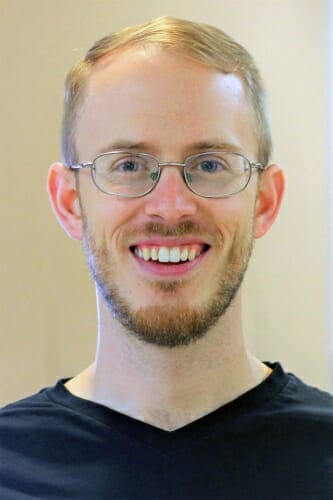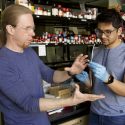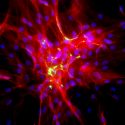UW–Madison chemist searches for ways to bioengineer proteins within cells
Andrew Buller, professor of chemistry at the University of Wisconsin–Madison, wants to add more building blocks to the body’s protein-making kit.
In nature, there exist 20 of these building blocks, called amino acids, which make up the proteins that perform the work required to sustain life. Buller says scientists can create more, allowing them to expand the ways in which cells build proteins.
“You could think of this as having a Lego kit with just 20 different pieces,” Buller says. “What could you build if you had more? We build these new Lego bricks and then teach biological systems how to make them too.”
Over the past two decades, scientists have been adding new amino acids to proteins, but it has required relying on organic chemists to first produce them in the lab. Buller is working to set up a system so that any molecular biologist can create the amino acids they want in a cell, using enzymes and an off-the-shelf chemical. This will make it easier and less expensive for biochemists to create the new molecules they want to use for research and medicine, he says.
“People have wanted to do this for a long time, but there are a lot of barriers,” Buller says. “We are addressing one of the biggest, which is that it’s really expensive and it takes a lot of training in two different areas. If we can make it cheaper and so that you need one skill set instead of two, then everybody else is going to be able to use this technology.”
This is the basis for Buller’s recent $2.2 million 2019 National Institutes of Health Director’s New Innovator Award, which is part of the agency’s High-Risk, High-Reward program designed to support innovative research with the potential for substantial contributions to the field. By eliminating some of the pressure to find funding for these kinds of projects, they allow researchers time to work, discover and create.
Buller’s group will repurpose how enzymes use vitamin B6, which is crucial for amino acid synthesis, to perform new types of reactions.
“Now we get to focus on the science,” Buller says, adding that the research could spawn methods of cheaper drug development. “I think this is an important challenge for scientists to work on. We want to lower the barriers, both in terms of cost and difficulty, to make it easier to make new kinds of molecules.”





